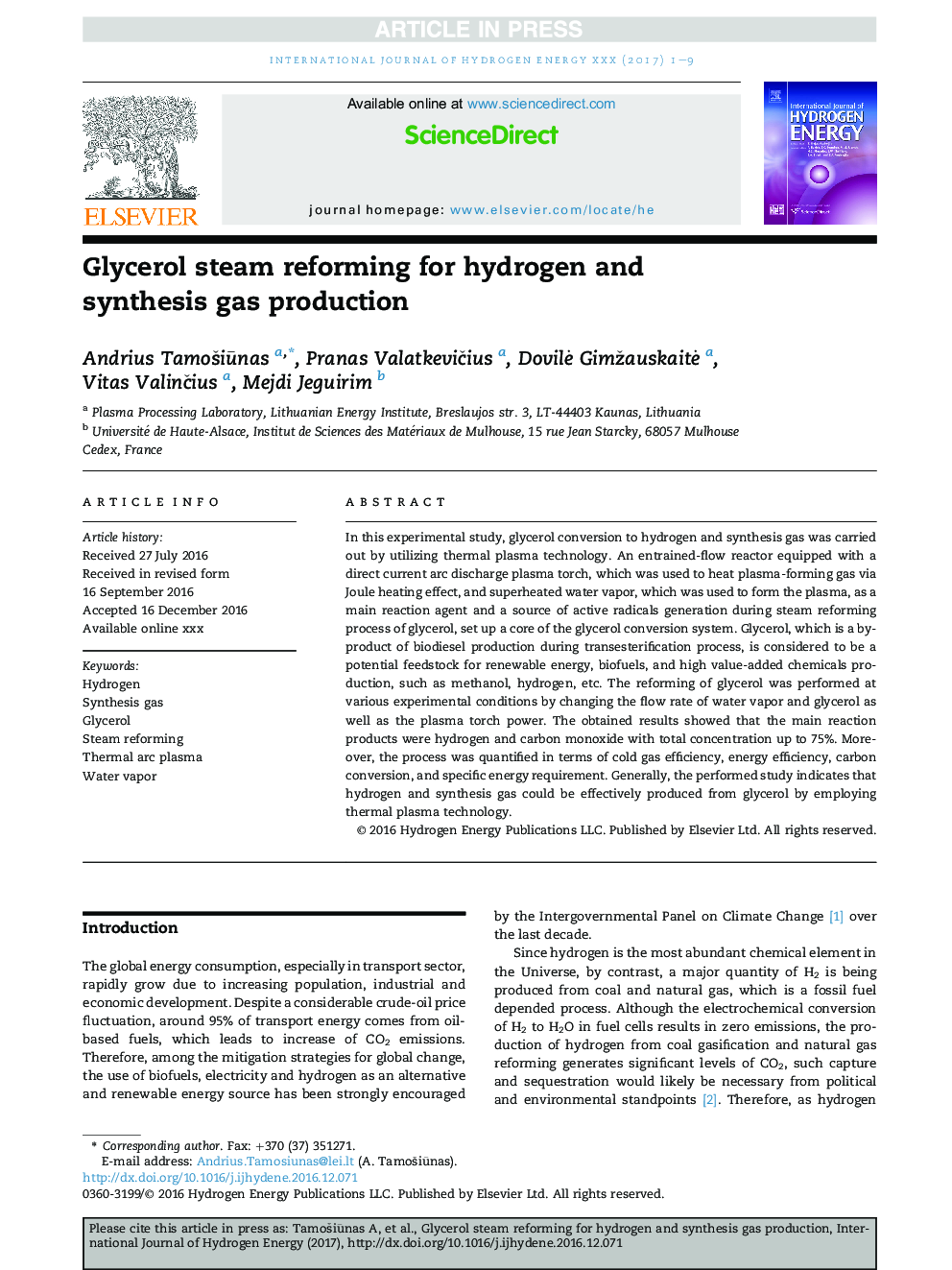| Article ID | Journal | Published Year | Pages | File Type |
|---|---|---|---|---|
| 5147811 | International Journal of Hydrogen Energy | 2017 | 9 Pages |
Abstract
In this experimental study, glycerol conversion to hydrogen and synthesis gas was carried out by utilizing thermal plasma technology. An entrained-flow reactor equipped with a direct current arc discharge plasma torch, which was used to heat plasma-forming gas via Joule heating effect, and superheated water vapor, which was used to form the plasma, as a main reaction agent and a source of active radicals generation during steam reforming process of glycerol, set up a core of the glycerol conversion system. Glycerol, which is a by-product of biodiesel production during transesterification process, is considered to be a potential feedstock for renewable energy, biofuels, and high value-added chemicals production, such as methanol, hydrogen, etc. The reforming of glycerol was performed at various experimental conditions by changing the flow rate of water vapor and glycerol as well as the plasma torch power. The obtained results showed that the main reaction products were hydrogen and carbon monoxide with total concentration up to 75%. Moreover, the process was quantified in terms of cold gas efficiency, energy efficiency, carbon conversion, and specific energy requirement. Generally, the performed study indicates that hydrogen and synthesis gas could be effectively produced from glycerol by employing thermal plasma technology.
Related Topics
Physical Sciences and Engineering
Chemistry
Electrochemistry
Authors
Andrius TamoÅ¡iÅ«nas, Pranas ValatkeviÄius, DovilÄ GimžauskaitÄ, Vitas ValinÄius, Mejdi Jeguirim,
